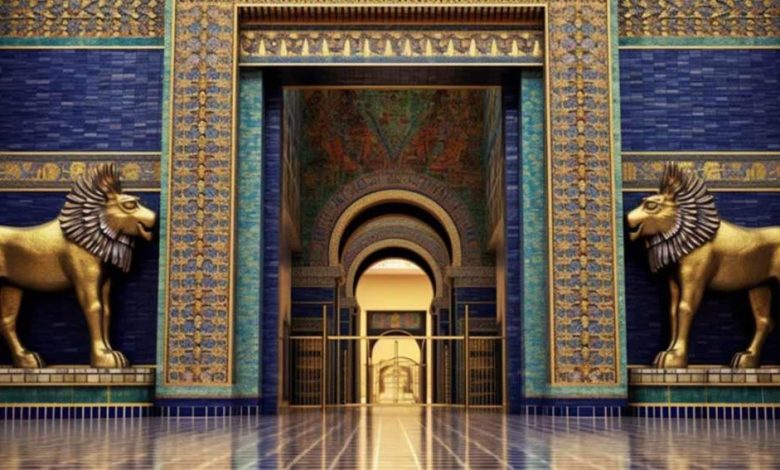Ishtar Gate: Embracing the Majesty of Babylon’s Ancient Entrance

Ishtar Gate: Embracing the Majesty of Babylon’s Ancient Entrance
Unveiling the Marvels of Ishtar Gate
For centuries, the Ishtar Gate stood as a symbol of power and magnificence in ancient Babylon. This grand entrance, once adorned with vibrant blue tiles and intricate reliefs, captured the imagination of all who beheld it. Today, the remnants of this once majestic structure continue to fascinate archaeologists, historians, and art enthusiasts.
History of Ishtar Gate
The Ishtar Gate, also known as the Eighth Gate of Babylon, was built around 575 BC during the reign of King Nebuchadnezzar II. This double-arched gate was dedicated to the Babylonian goddess Ishtar and served as the main entrance to the city of Babylon.
Constructed with exquisite craftsmanship and engineering prowess, the gate spanned a width of 14 meters and featured glazed tiles in various shades of deep blue, symbolizing the heavens and the divinity of Ishtar. The reliefs on the gate depicted animals such as lions, dragons, and bulls, emphasizing the power and protection offered by the goddess.
Visiting Ishtar Gate Today
Although the original Ishtar Gate lies in ruins, an impressive reconstruction can be found at the Pergamon Museum in Berlin, Germany. This meticulous reconstruction allows visitors to experience the awe-inspiring beauty of the Ishtar Gate and gain a deeper understanding of the cultural significance it held for the people of ancient Babylon.
Frequently Asked Questions (FAQs)
1. Why was the Ishtar Gate built?
The Ishtar Gate was built as a grand entrance to the city of Babylon and to honor the Babylonian goddess Ishtar, known as the goddess of love, fertility, and war. It was meant to showcase the power and might of the Babylonian empire.
2. What materials were used to construct the Ishtar Gate?
To construct the Ishtar Gate, builders used clay bricks and adorned them with bright blue glazed tiles. The tiles were meticulously crafted and arranged to form intricate patterns and reliefs of animals.
3. Why was the color blue significant in the Ishtar Gate?
The color blue held great significance in Babylonian culture. It was associated with divinity, as well as representing the heavens and the godly powers of Ishtar, the goddess for whom the gate was dedicated.
4. Can I visit the original Ishtar Gate in Babylon?
While the original Ishtar Gate is not accessible, a stunning reconstruction can be found at the Pergamon Museum in Berlin, Germany. This reconstruction provides a fantastic opportunity to marvel at the grandeur of the gate and immerse yourself in ancient Babylonian history and artistry.
5. Are there any other notable structures in Babylon?
Yes, apart from the Ishtar Gate, Babylon was known for its Hanging Gardens, considered one of the Seven Wonders of the Ancient World. The city was also home to the famous Tower of Babel and the esteemed Temple of Marduk.
Embrace the majesty of Babylon’s ancient entrance, the Ishtar Gate, and be transported back in time to a grand era of architectural splendor and cultural significance. Visit the impressive reconstruction at the Pergamon Museum and witness firsthand the awe-inspiring craftsmanship that once defined the glory of Babylon.



